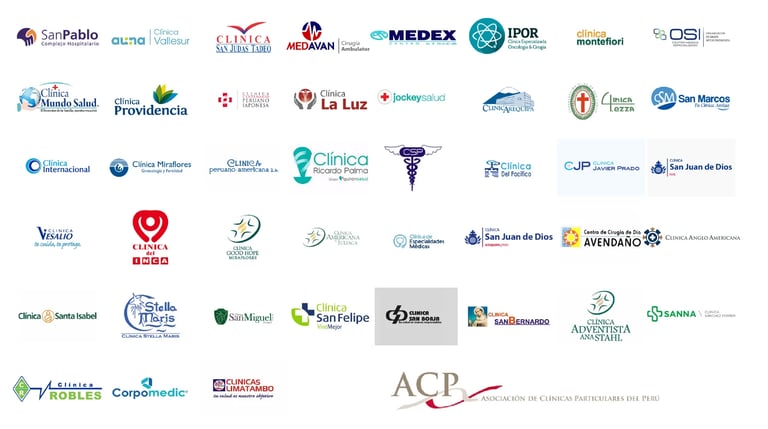
Why Does Private Healthcare Only Work for the Wealthy?
Explore why private healthcare systems often serve the wealthy and what lessons countries like South Africa, Switzerland, and Brazil offer for creating more inclusive healthcare systems.
Edú Saldaña
9/18/20246 min read
Why Does Private Healthcare Only Work for the Wealthy? Lessons from South Africa, Switzerland, and Brazil
During my virtual coffee with Professor Frikkie Booysen, I had the opportunity to dive deep into one of the most critical issues facing health economics today: how to balance a successful private healthcare system with accessibility for lower-income populations. While many countries have attempted to address this dilemma, the solutions are often inadequate, leading to unequal access and financial strain for the most vulnerable. However, there are some promising examples of countries and initiatives that are navigating this complex balance.
Private Healthcare Systems: A Model for the Rich?
One of the key takeaways from my discussion with professor Booysen was the glaring gap in healthcare access due to financial limitations. In countries like the United States and Peru, the private healthcare sector thrives—at least for those who can afford it. According to Salud con Lupa, the COVID-19 pandemic in Peru exposed the severe limitations of its healthcare system, as private clinics charged exorbitant fees for basic treatments while the state failed to introduce deep reforms.


This dynamic is not unique to Peru; in the United States, private healthcare is primarily for the wealthy, while lower-income citizens struggle with access to even basic care. A report by the Peter G. Peterson Foundation highlighted that, despite the U.S. spending more on healthcare than any other country, it ranks poorly in accessibility, equity, and outcomes compared to other high-income nations. The U.S. healthcare system is designed to benefit those who can pay, leaving millions uninsured or underinsured, and creating a massive financial burden for families. As George Carlin put it best: "The reason they call it the American Dream is because you have to be asleep to believe it." When it comes to healthcare in the U.S., you’d better not wake up—because you’ll be hit with the bill before you even get out of bed.
In Peru, the pandemic brought these issues into stark relief. The lack of oversight on private healthcare institutions allowed for exploitative practices, and the failure of public reforms left many people without affordable options. The private healthcare sector, instead of complementing the public system, exacerbated inequality by charging exorbitant fees and creating an environment where quality healthcare is only available to those with significant financial resources.
This is where the system fundamentally fails. The absence of proper government regulation and reform has allowed private providers to operate unchecked, resulting in a healthcare system that exacerbates inequality rather than alleviating it. When we examine this through the lens of Keynesian economics and the Modern Monetary Theory, the solution seems clear: integrating state intervention with private initiatives could provide a more equitable path forward. Governments must step in to ensure that healthcare is not a privilege for the wealthy but a right for all citizens.
The Cost of Inaction: Health and Economic Fallout
The failure to act on healthcare inequality has far-reaching consequences, not only in terms of public health but also economically. According to professor Booysen, “Loans cannot pay for healthcare.” The reliance on loans and cash flow from private entities to sustain healthcare services is unsustainable. Private healthcare providers can only continue operating as long as they remain profitable, which leads to a system where financial interests are prioritized over patient care.
As Carlin sarcastically pointed out in his bit on healthcare: "America's leading industry is still the manufacture, packaging, distribution, and marketing of bullshit." And nowhere is that more true than in private healthcare, where it’s not about caring for the sick but making the most out of a broken system.
In countries where healthcare systems rely on privatization without strong regulatory frameworks, the risk of bankruptcy for private healthcare providers is a constant threat. This was particularly evident during the COVID-19 pandemic when many private clinics struggled to stay afloat without government intervention. Without state support, healthcare providers are left vulnerable to market forces, which can lead to closures, reduced services, and increased costs for patients.
The consequences of this are twofold: not only do individuals lose access to essential healthcare services, but the economy also suffers as the workforce becomes less healthy and productive. As we have seen in both Peru and the U.S., the lack of affordable healthcare leads to a sick and overburdened population, which in turn drags down economic productivity and increases public health costs in the long run. This creates a vicious cycle where poor health outcomes feed into poor economic outcomes, further widening the gap between the rich and the poor.
Successful Models: Switzerland and Brazil
Not all hope is lost, though. Some countries have developed successful models of balancing private healthcare with public access. Switzerland, for instance, is often lauded for its healthcare system, which mixes private insurance with strong government regulation. Unlike the United States or Peru, the Swiss government ensures that all citizens have basic health coverage, and those who cannot afford it receive subsidies. This creates a system that combines the efficiency of private companies with the inclusivity of government oversight.
A critical component of Switzerland’s healthcare system is its universal health insurance mandate. Every citizen is required to purchase health insurance from private providers, but the government ensures that subsidies are available for those who cannot afford the premiums. As a result, Switzerland boasts one of the highest life expectancies in the world and has a healthcare system that consistently ranks among the best in terms of quality and accessibility.
Brazil offers another compelling example with its Unified Health System (SUS), which is heralded as a model of public healthcare for the world. Despite economic challenges, Brazil has managed to provide free healthcare for all its citizens, largely through a well-coordinated public health system that integrates private providers for specialized care. This hybrid system has proven that with the right balance, accessible healthcare can be achieved without compromising quality.
The SUS system in Brazil has demonstrated that it is possible to provide high-quality healthcare to all citizens, regardless of income. While challenges remain, particularly in terms of funding and resource allocation, the SUS has been instrumental in improving public health outcomes across the country. During the COVID-19 pandemic, the SUS played a critical role in providing care to millions of Brazilians, showcasing the importance of a robust public healthcare system in times of crisis.
The South African Initiative: A Path to Inclusivity
During our conversation, professor Booysen highlighted the steps South Africa is taking to improve healthcare inclusivity. While the country has long struggled with a divided healthcare system, recent initiatives have aimed at bringing private sector involvement into public health initiatives, allowing for broader access without relying solely on government funds. By attracting investments in healthcare, South Africa is trying to ensure that lower-income populations are not left behind in receiving quality care.
This approach aligns with Keynesian principles, where a mixed economy—capitalism combined with strong public policies—can act as a reformist perspective that balances market interests with social needs. The idea is simple yet powerful: governments must collaborate with private entities not just for profit, but to build sustainable, inclusive healthcare systems. South Africa’s model, although still in its infancy, offers a glimpse of how private and public partnerships can work to create a more equitable healthcare system.
What Can Peru Learn?
Peru’s healthcare system is at a breaking point, with significant inequalities in access to care for its poorest citizens. During the pandemic, the government’s inability to regulate private providers highlighted the need for a structural overhaul. If Peru can adopt a model similar to Switzerland, with stronger state intervention, or Brazil, with its blend of public and private healthcare, it may finally begin to address the healthcare inequalities that plague the country.
The lesson here is that private healthcare cannot operate independently of public policy. Without regulation and state involvement, healthcare will continue to be a privilege of the wealthy. This is where the theories from professor Booysen’s Health Economics course come to life: economic systems must be designed not just for profit but for people. By leveraging financial tools like government loans and subsidies, and by encouraging private investments into public health, Peru can build a more equitable healthcare system that serves all its citizens.
Balancing Health and Nature: A Healthy Interaction
As we discussed the financial and physical risks tied to deteriorating natural environments, the topic of government complicity in ecological damage came to light. professor Booysen emphasized the importance of finding a “healthy way” for governments to interact with nature without contributing to its destruction. This balance is not just an environmental issue but a healthcare issue as well. The more we degrade our environment, the more health crises will arise—be it from air pollution, water scarcity, or pandemics. Governments need to play a proactive role in ensuring that public health and environmental sustainability are pursued in tandem.
In Conclusion: Redefining Health Economics for the Future
If we truly want to address the inequalities in healthcare, we need to shift our focus from profit-driven models to inclusive, sustainable systems. South Africa’s initiatives, Brazil’s SUS, and Switzerland’s blend of private and public healthcare provide valuable lessons. For countries like Peru, this means embracing reformist perspectives that combine private sector efficiency with public sector inclusivity.
The financialization of healthcare should not come at the cost of human lives. As professor Booysen put it during our discussion: “Loans cannot pay for healthcare.” We need government intervention and collaboration with private entities to ensure that healthcare is a right, not a privilege.
If these ideas resonate with you, suscribe for more insights on health economics and systemic reform. Let’s engage in a conversation about how we can build more inclusive healthcare systems—because everyone deserves access to quality care. Share your thoughts in the comments and let's continue this crucial dialogue!
Kunan Project
We use humor to break down complex issues, connect communities, and build a more inclusive future
© 2025. All rights reserved.
info@kunanproject.com
